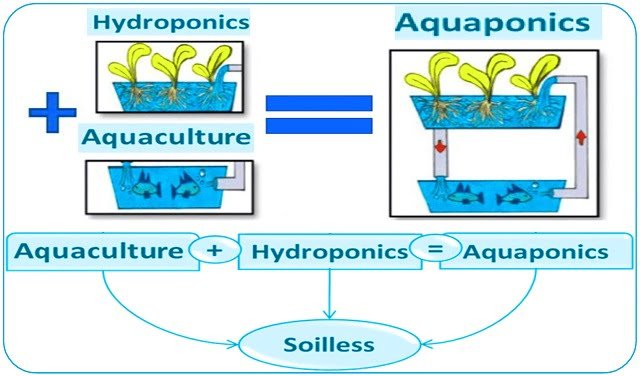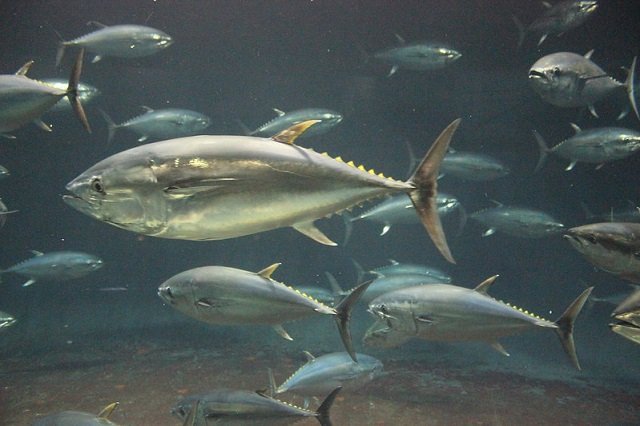
The growing global food insecurity demands innovative solutions to transform our production systems. In this context, urban aquaponics emerges as a promising technique that not only brings food closer to consumers but also redefines resource efficiency. A recent study published in the journal Engineering by researchers from Beijing Normal University, Fundação Getúlio Vargas (FGV), Fudan University, Agricultural Technology Co., Ltd., and Guangdong University of Technology thoroughly analyzes the food–water–energy (FWE) nexus in aquaponics systems, offering a clear roadmap of their feasibility, challenges, and tremendous potential.
The study focuses on developing a methodology to assess rooftop aquaponics (RA) and ground-based aquaponics (GA) systems within cities, using Beijing as a practical case study. The findings provide crucial insights for producers, researchers, and policymakers seeking to promote a more resilient and sustainable agricultural transformation.
A comparative analysis: Aquaponics vs. traditional greenhouses
- 1 A comparative analysis: Aquaponics vs. traditional greenhouses
- 2 The profitability of aquaponics: A high-return investment
- 3 Towards an optimized and more sustainable aquaponics
- 4 “Farm-to-fork” impact and urban resilience
- 5 Conclusions: A promising path with clear challenges
- 6 Entradas relacionadas:
To understand the true value of aquaponics, the study compares it with traditional greenhouses (TG), revealing an intriguing balance of pros and cons.
Major water savings: An undeniable advantage
One of the study’s most striking results is the excellent water efficiency performance of aquaponics. Both rooftop and ground-based systems save between 42% and 44% of water consumption compared to traditional greenhouses during the on-farm production phase. This is due to the continuous recirculation of water between fish tanks and grow beds, where fish waste is converted into nutrients for plants, creating a closed and virtuous cycle.
The energy challenge and carbon footprint
However, this efficiency comes at a cost. The research shows that aquaponics consumes between 2.3 and 3 times more energy and generates between 1.1 and 2.1 times more carbon emissions than conventional greenhouses. The primary contributor to this impact is electricity use, which accounts for 21.8% to 41.3% of the system’s environmental effects, mainly due to water pumping and aeration. Fish feed is also a critical factor, significantly contributing to both energy consumption and emissions.
The profitability of aquaponics: A high-return investment
From an economic perspective, aquaponics requires a higher initial investment. The lifecycle cost of a traditional greenhouse is significantly lower (23 CNY per m²) compared to rooftop (158 CNY per m²) and ground-based aquaponics systems (239 CNY per m²).
Despite this, the scales tip in favor of aquaponics due to its revenue potential. Its reputation for producing “green and pollution-free” food allows products to command higher market prices. As a result, aquaponics revenues can be 8 to 12 times greater than those of a traditional greenhouse, demonstrating its substantial economic advantage for operators.
Towards an optimized and more sustainable aquaponics
The study not only identifies problems but also proposes solutions. The key to the future of urban aquaponics lies in optimizing its weakest points. The researchers identified electricity, fish feed, and infrastructure materials as the most sensitive factors.
Stay Always Informed
Join our communities to instantly receive the most important news, reports, and analysis from the aquaculture industry.
Based on this, they designed optimization strategies, including:
- Use of renewable energy: Replacing conventional electricity with solar or wind energy.
- More sustainable fish feed: Using formulations with more eco-friendly ingredients.
- Better materials and recycling: Replacing construction materials such as bricks and concrete with lighter alternatives and increasing recycling rates of infrastructure components.
Implementing these strategies could reduce energy consumption and carbon emissions by up to 80–85% during the production phase, bringing aquaponics closer to traditional systems in these aspects while maintaining its superiority in water savings.
“Farm-to-fork” impact and urban resilience
Another major advantage of urban aquaponics is the reduction of off-farm impacts. By bringing production closer to consumers—especially in rooftop systems—it minimizes the need for packaging, refrigerated transport, and distribution. This helps reduce the energy, water, and carbon impacts of the traditional supply chain by 14% to 44%.
At the city scale, the potential is enormous. The study estimates that if all potential rooftop and ground spaces were used for aquaponics, the city’s vegetable self-sufficiency could increase by 15%, while avoiding 82% of the energy, water, and carbon footprint associated with food imports.
Conclusions: A promising path with clear challenges
Urban aquaponics presents itself as a robust and multifaceted solution to the food security challenges of the 21st century. This study shows that although it faces significant challenges in terms of energy use and carbon emissions, these can be effectively mitigated through optimization and the adoption of clean technologies.
For aquaculture professionals, aquaponics is not just a way to diversify production but also a highly profitable business opportunity with excellent market reception. It is a system that, by integrating fish and vegetable production, fosters a circular economy and brings us one step closer to creating self-sufficient, resilient, and sustainable cities.
Contact
Fanxin Meng
State Key Laboratory of Regional Environment and Sustainability, School of Environment, Beijing Normal University
Beijing 100875, China
Email: fanxin.meng@bnu.edu.cn
Reference (open access)
Yuan, Q., Meng, F., Liu, Y., De Oliveira, J. A. P., Zhang, L., Cai, W., & Yang, Z. (2025). Shaping Resilient Edible Cities: Innovative Aquaponics for Sustainable Food–Water–Energy Nexus. Engineering. https://doi.org/10.1016/j.eng.2025.01.021
Editor at the digital magazine AquaHoy. He holds a degree in Aquaculture Biology from the National University of Santa (UNS) and a Master’s degree in Science and Innovation Management from the Polytechnic University of Valencia, with postgraduate diplomas in Business Innovation and Innovation Management. He possesses extensive experience in the aquaculture and fisheries sector, having led the Fisheries Innovation Unit of the National Program for Innovation in Fisheries and Aquaculture (PNIPA). He has served as a senior consultant in technology watch, an innovation project formulator and advisor, and a lecturer at UNS. He is a member of the Peruvian College of Biologists and was recognized by the World Aquaculture Society (WAS) in 2016 for his contribution to aquaculture.




